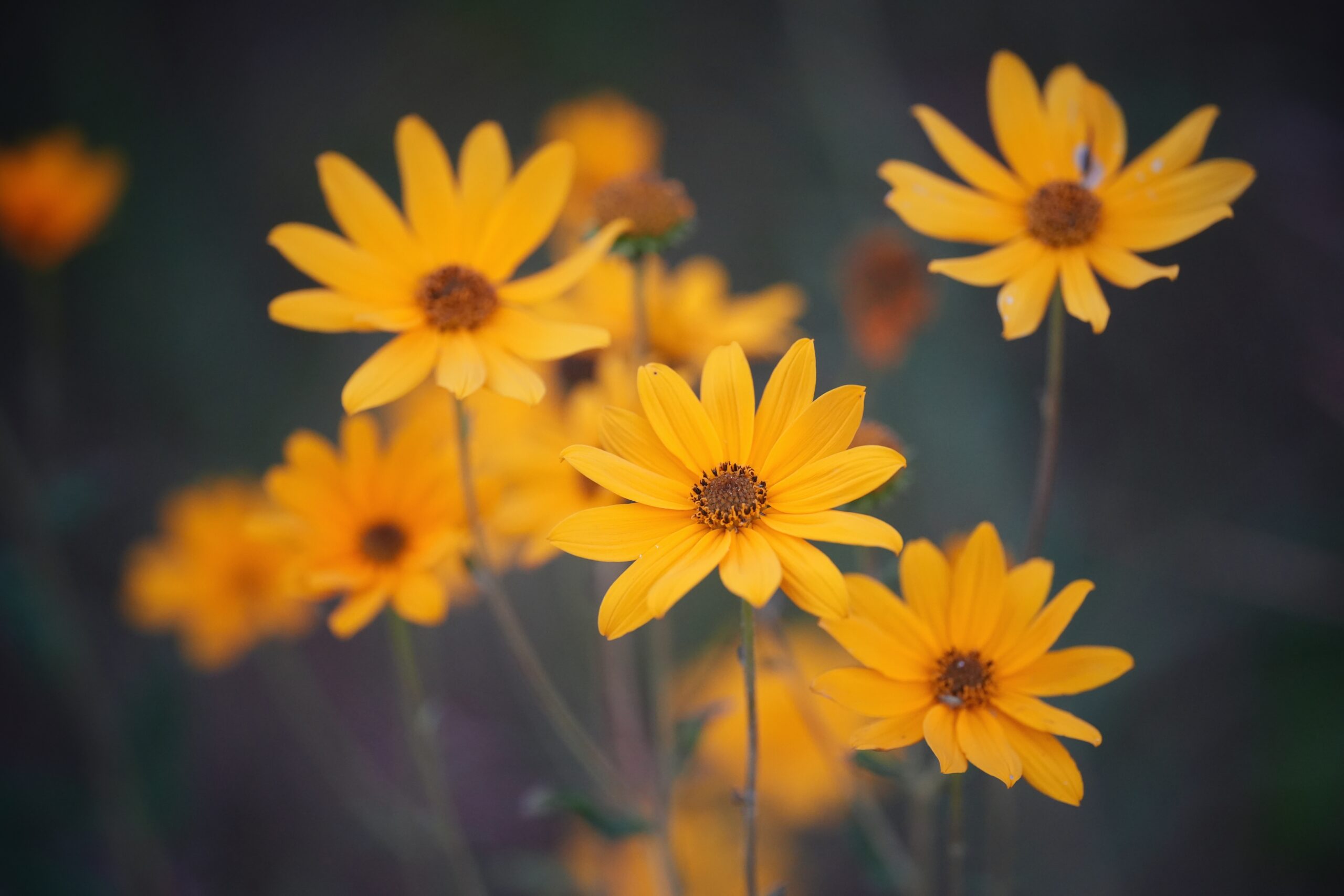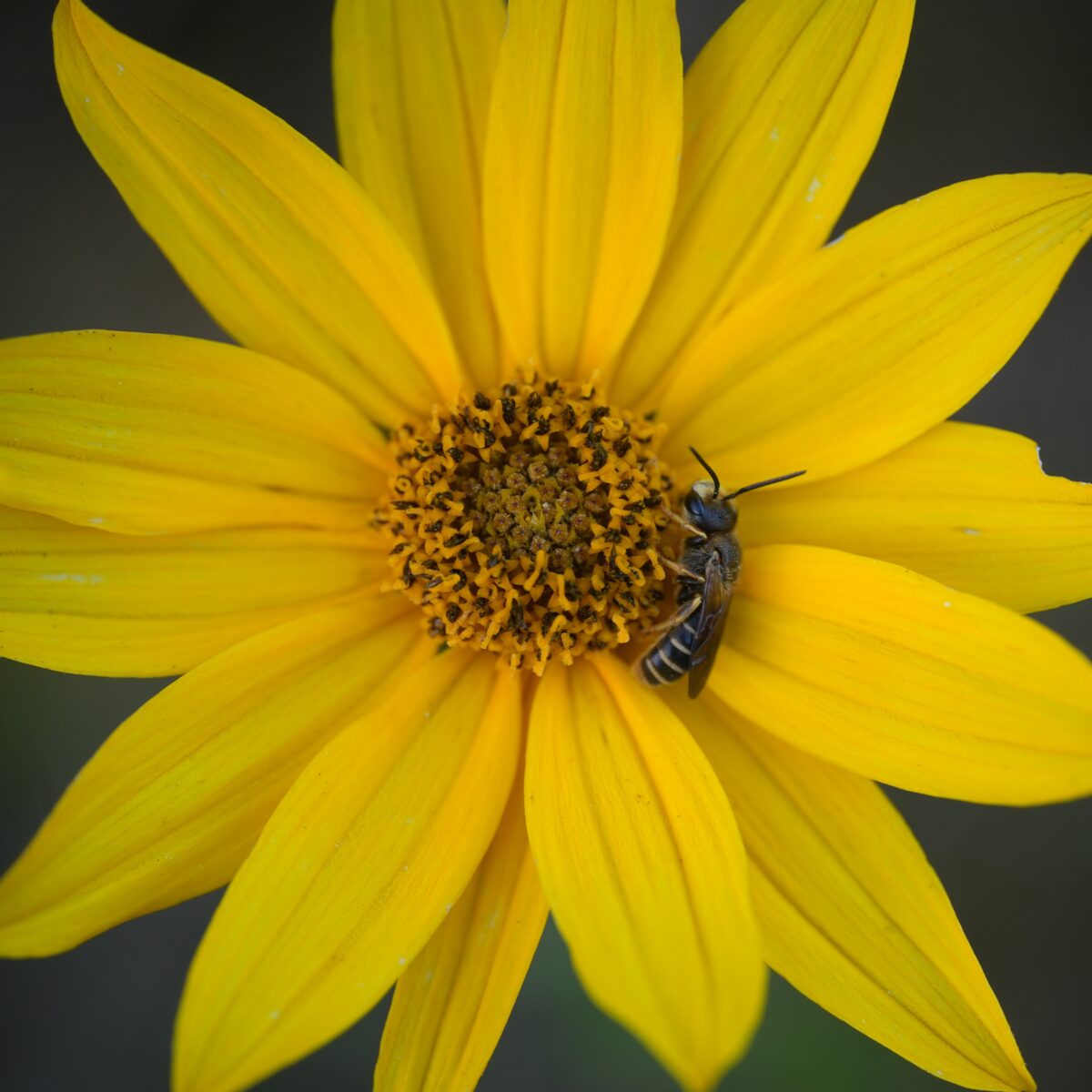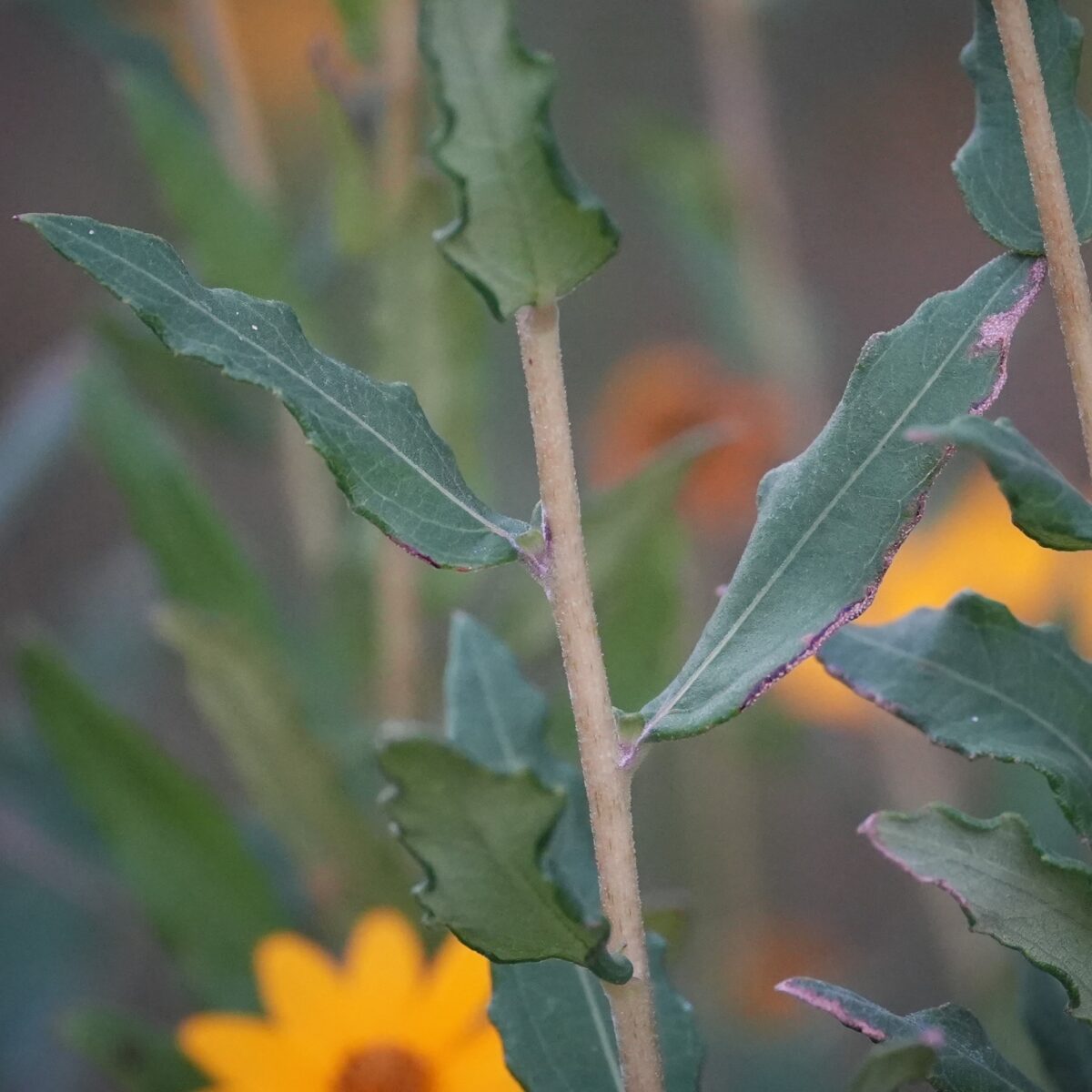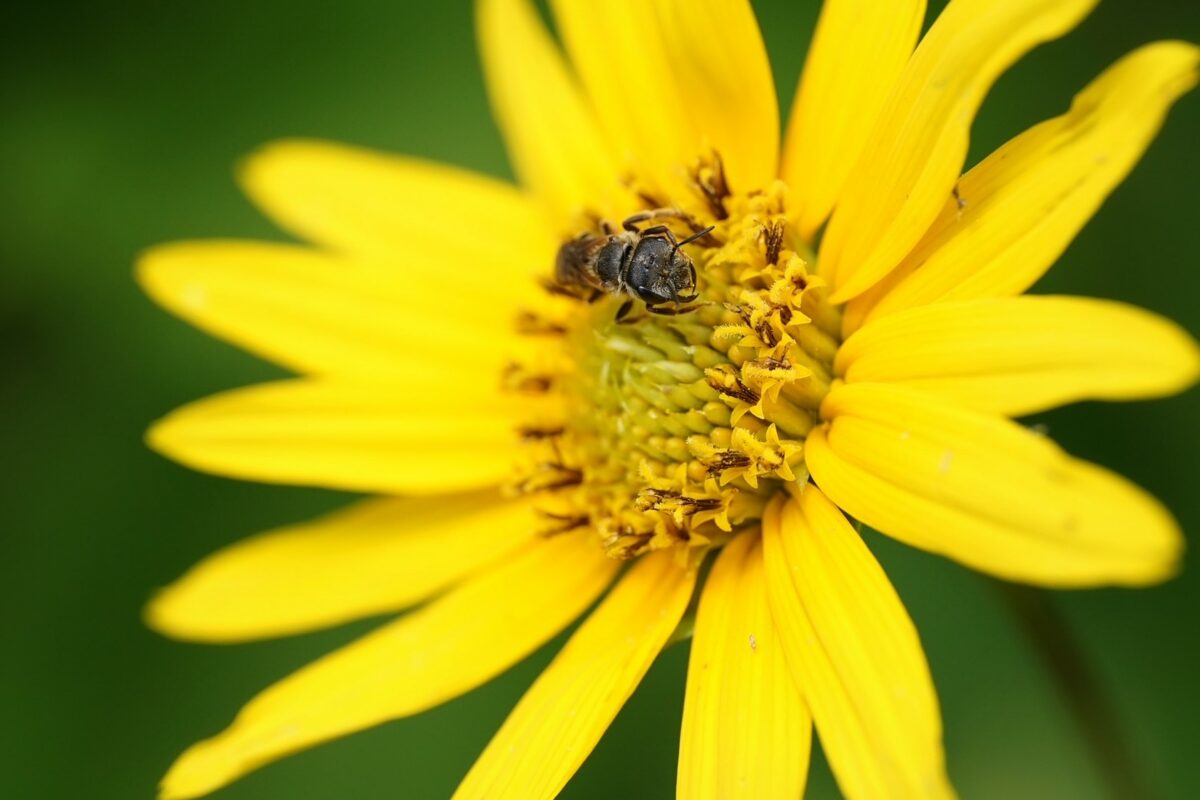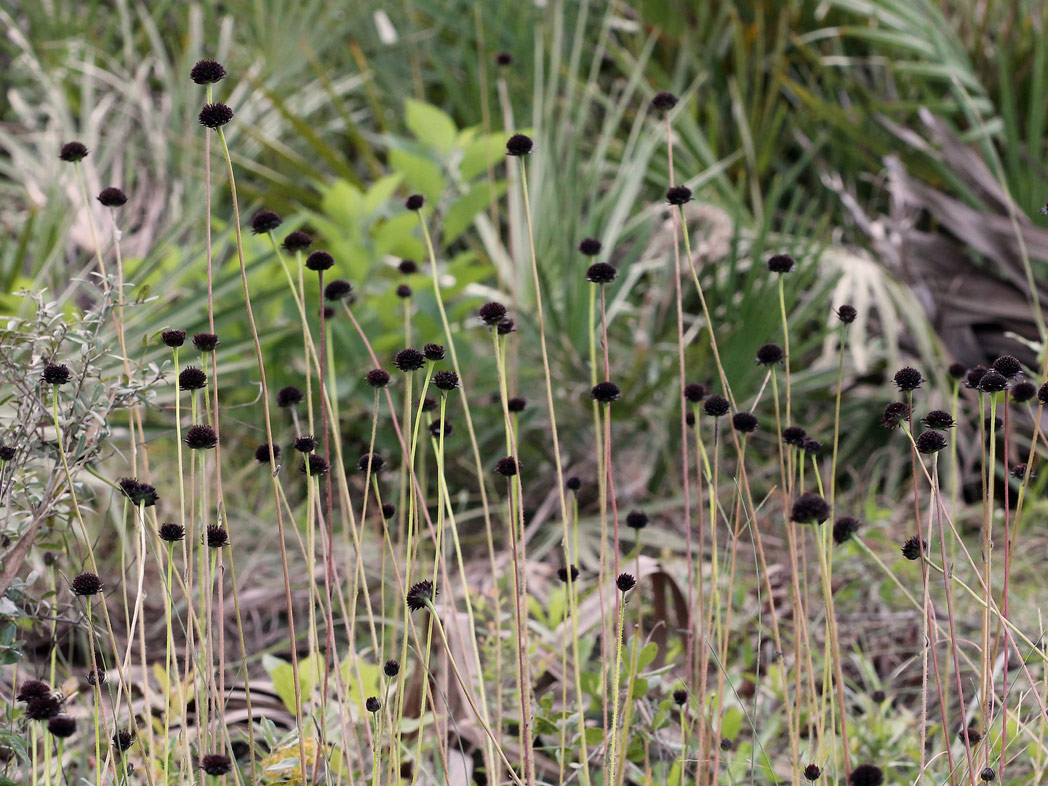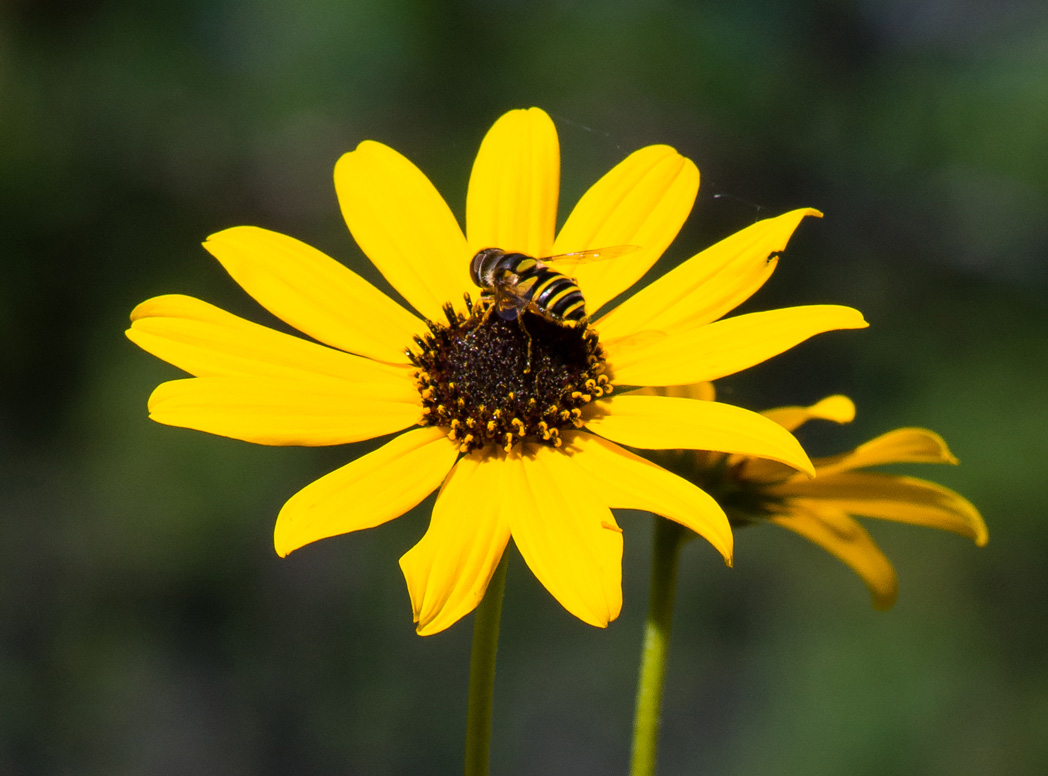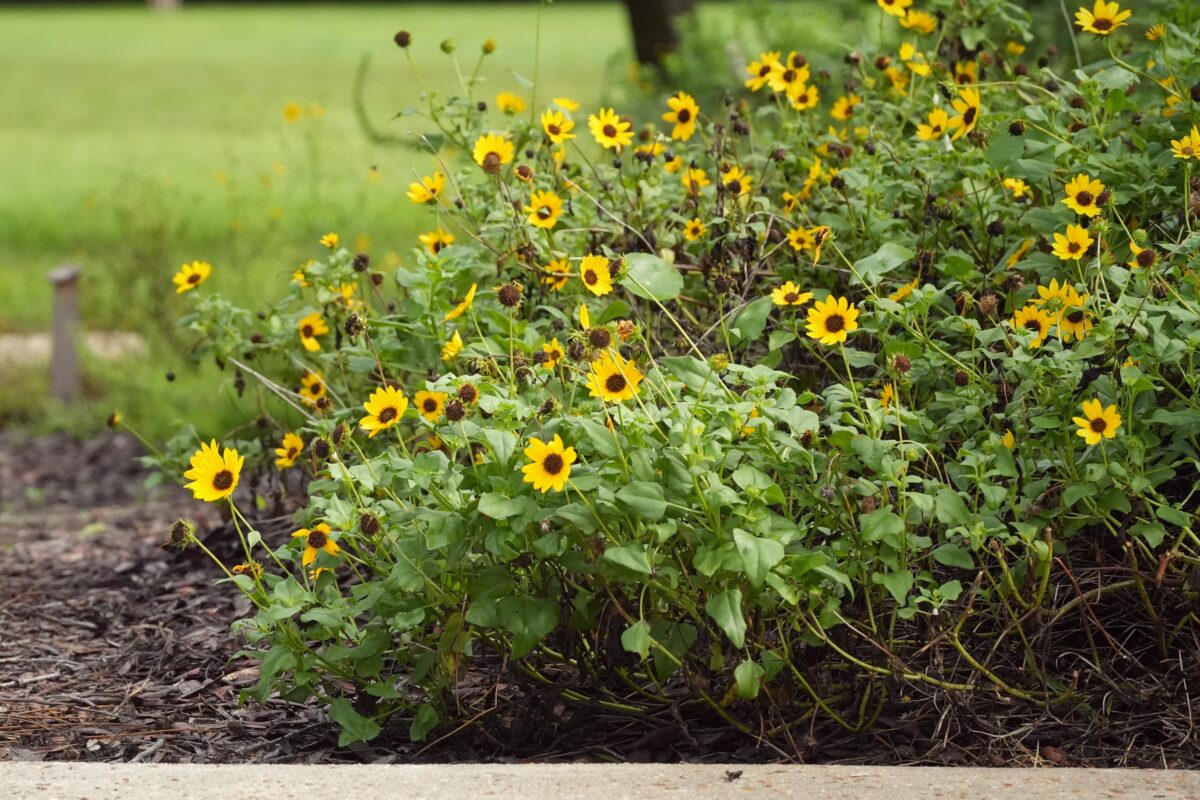Florida sunflower
Pictured above: Florida sunflower (Helianthus floridanus) on a Duval County roadside by Emily Bell. Click on terms for botanical definitions. View post as a PDF.
The Florida sunflower (Helianthus floridanus) is endemic to the Southeastern Coastal Plain from South Carolina to Louisiana. Uncommon throughout most of its range, it is most abundant in North Florida and southern Georgia. It occurs naturally in wet to moist habitats from pine savannas to roadsides. Its fall blooms are a delight to many pollinators and the seeds feed songbirds.
Florida sunflower’s bright yellow blooms can reach up to 3 inches across. They have narrow ray petals surrounding a compact head of yellow disk florets. Leaves are lanceolate with undulate margins and may occur both alternately and oppositely on the stems. They are scabrous with a dark green surface and silvery green underside. Stems are green to yellowish or tan and branching.
This species may be easily confused with Narrowleaf sunflower (Helianthus angustifolius), which occurs in the same habitats. The two species can best be distinguished by the width of their leaves, with the Florida sunflower’s being broader than the linear leaves of the Narrowleaf sunflower. H. angustifolius has a wider distribution, is more common throughout the state and is also more available commercially.
Family: Asteraceae (Aster, composite or daisy family)
Native range: Most common in peninsular North Florida, rare in the Panhandle and reaching south to Osceola County, but uncommon in its Central Florida range as well.
To see where natural populations of Florida sunflower have been vouchered, visit florida.plantatlas.usf.edu.
Lifespan: Perennial
Soil: Moist to wet, acidic soils
Exposure: Full sun to minimal shade
Growth habit: Up to 6 feet tall and colony-forming
Propagation: Seed, division
Garden tips: Florida sunflowers are most suitable for large, open, wet sites such as a buffer along wetlands; planted in a sunny moist meadow; along a lake edge, retention pond or ditch; or in the back of a bog garden. Because of its height and its propensity to form large clusters, it is not recommended for small gardens or formal landscapes. It can spread aggressively by rhizome and may outcompete other wildflowers in a small setting.
Florida sunflowers are occasionally available from nurseries that specialize in Florida native plants. Visit www.PlantRealFlorida.org to find a nursery in your area.
Learn more about Florida sunflowers from the Institute for Regional Conservation.
For information on other Helianthus species, see these resources:

